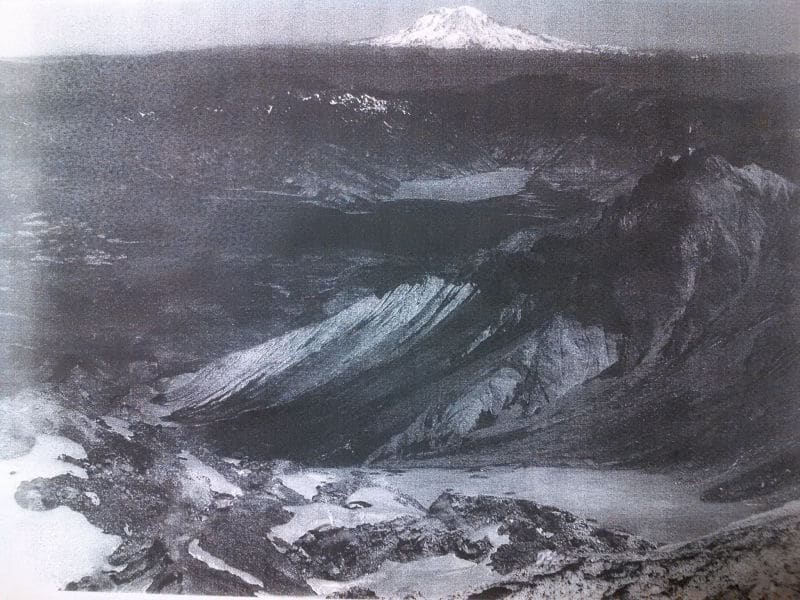How the Textbook Knows
★★★★★

I once climbed Mt. St. Helens to the rim of its crater. The picture above, taken from the rim that day, should give you an idea of what an exhilarating experience it was. You could print this picture, but if you have an old black-and-white printer like I do, it won’t look as good as it does on the screen. A photocopy of that printout looks worse yet:

A textbook is the history-teaching equivalent of that photocopy. Textbooks are valuable teaching tools, but the past has lost much of its color, detail, and nuance by the time it’s been recounted. We can reclaim some of that vividness for our students by introducing them to primary sources.
Primary sources are sources of information that come directly from people who experienced the events being studied. They include writings, artworks, records, buildings, music, and artifacts. The pages of your history textbook would be blank without primary sources. Its authors weren’t around to see what was going on in ancient Egypt or colonial America, but they (or those they have learned from) have studied what was left behind by those who were there.
Give your students the experience of harvesting, cooking, and chewing history for themselves in addition to slurping the canned, puréed history served by the textbook. You can start by digging into the primary sources found in the textbook itself.
An American history textbook, for example, will almost certainly mention the Declaration of Independence, and many will print it in its entirety. Read it with your students instead of just reading about it. First, learn as much as you can about the background of this document, and be ready to tell your students about its grounding in Enlightenment philosophy and its references to specific events. Having informed yourself, give your students the context they will need to understand the document. Then have your students read it, either as an assignment or together in class. Invite their observations. The Declaration lays out a careful, sequential argument, a vital part of which is near the beginning:
We hold these truths to be self-evident, that all men are created equal, that they are endowed by their Creator with certain unalienable Rights, that among these are Life, Liberty and the pursuit of Happiness.–That to secure these rights, Governments are instituted among Men, deriving their just powers from the consent of the governed, –That whenever any Form of Government becomes destructive of these ends, it is the Right of the People to alter or to abolish it, and to institute new Government, laying its foundation on such principles and organizing its powers in such form, as to them shall seem most likely to effect their Safety and Happiness.
Draw a series of questions from this section. According to the Declaration, what rights are all men given by their Creator? What is the purpose of government? From whom do governments receive their powers? What do the people have the right to do if their government is not fulfilling its purpose? How do these ideas compare with the teachings of the Bible? How can we see the values of the Declaration shaping American life today?
The thrill of discovery will follow as students confront the past as directly as possible. It’s always more exciting to search for and find a treasure for yourself than to have it handed to you. It’s always more exciting to climb to the rim of a crater than look at a grainy picture of it.
Related Items
Leave a Reply
Feedback